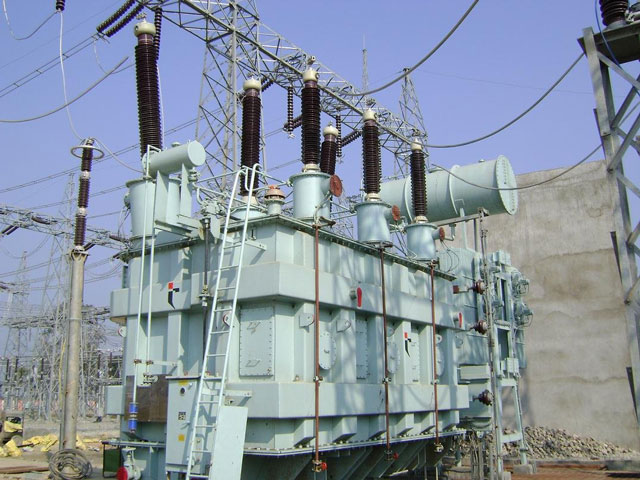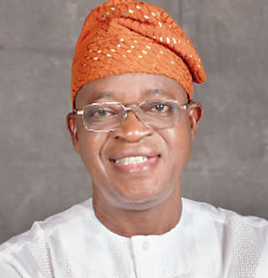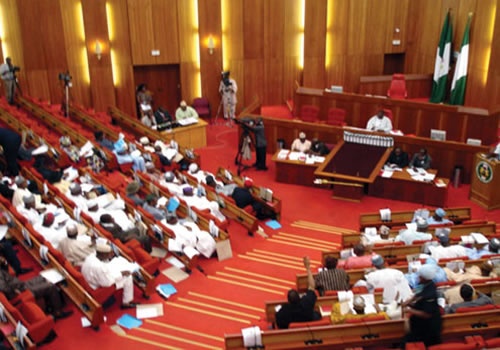Contrary to all expectations, the power sector privatisation has turned out to be an unreserved fiasco. The optimism of economic and social revolution touted as an inevitable accompaniment of a steady and uninterrupted electricity supply has come to naught. Six years after the privatisation was pulled off by the Goodluck Jonathan administration, Nigerians are now yearning for an urgent intervention to save the sector from an utter collapse, which could be only a matter of time.
Encumbered by a public power sector that reeked of corruption, ineptitude and facility decay, Nigeria had readily embraced an option of reform, which could only be effectively implemented through privatisation. “To the Nigerian people, who have demonstrated such great patience and confidence, putting up often with darkness…I say better days are coming,” Jonathan had boisterously promised. But rather than carry out a transparent bidding process that would have attracted not just the much-needed investible funds but also the technical know-how, the exercise was mired in opacity.
In place of the experts and foreign investors that privatisation set out to attract, a motley group of Nigerians with practically no antecedent in power sector business and lacking the financial muscle was thrown up as the new investors. The result is now obvious; instead of an effective and efficient power sector that would guarantee constant electricity supply to light up homes and fire the industries, boosting the economy, Nigerians are now saddled with an albatross.
As currently structured, the power sector stands on a wobbly tripod, made up of the Generation Companies, the Transmission Company of Nigeria and the Distribution Companies. While it is the duty of the GenCos to generate electricity, the TCN, which is still wholly owned by the government, takes the responsibility for the transmission to the grid, from where the DisCos can then sell to the consumers. But none of them has been able to inspire confidence.
When the power assets were handed over to private investors on November 1, 2013, the electricity generated in Nigeria that day was 3,712.4 megawatts, from an installed generation capacity of 12, 910.40 MW and available capacity of 7,652.60 MW, according to data attributed to the Nigerian Electricity System Operator. For a population of 171.8 million then, this was ridiculous. But despite the generation capacity of 12,910.40 MW, the transmission could only boast a wheeling capacity of 8, 100 MW, while 5,375 MW remained the peak that had ever been generated.
Six years down the line, with a population of about 200 million, very little has changed. The distribution capacity is still estimated at around 4,000 MW, barely over the 3.712.4 MW of November 1, 2013. The Vice-President, Yemi Osinbajo, was quoted in a report two months ago as saying that installed power generation had improved to 13, 427MW (as against 12,910.40 MW in 2013), while the TCN Managing Director, Usman Mohammed, said the national grid had the capacity to transmit 7,000 MW.
These figures remain mere academic, as long as they do not translate into improved electricity supply to consumers. What is however undeniable is the fact that the DisCos, which directly interface with the consumers, have emerged as the weakest link in the electricity supply value chain. They keep complaining about cost-reflective tariff, even though they have been found wanting through and through.
They whine over the reluctance of consumers to pay when more than 55 per cent of those consumers are not metered, and access to electricity remains a mirage. For sure, the GenCos are not generating enough and the TCN is not transmitting adequately, yet, even the little that is available is rejected by the DisCos. For example, 9,310.64 MW of electricity was reportedly rejected between August 13 and August 20.
Rejecting loads when there is not enough to go round may sound outrageous but there are other weighty issues that pointedly betray the investors as utterly out of their depth. Particularly, funding has remained a knotty issue. Having raided the local banks for money to buy the firms, the local investors have not been able to fund the needed facility upgrade that should have brought about improvement in electricity supply.
Although a REUTERS report put the cost of the purchase of the power assets in 2013 at $2.5 billion, the TCN MD said the DisCos alone would require a whopping $4.3bn investment to make the desired impact. Shorn of credit options, following challenges in servicing their loans, the investors are now at their wits’ end – uncertain of what step to take next, except perhaps to let go of their majority shares and pave the way for a takeover by capable foreign investors.
As the designated revenue collectors on behalf of other operators in the industry, the DisCos are heavily in debt and have failed to remit money collected to the others. As of July, the TCN said it was being owed N270 billion by the DisCos. The former Minister of Power, Works and Housing, Babatunde Fashola, had also said last year that the Discos’ indebtedness to the Nigerian Bulk Electricity Company stood at N500 billion. “NBET also owes GenCos N325.784 billion, which can be settled if NBET collects what the DisCos are owing,” he said.
This debt burden has completely thrown the power sector off balance. Admitting that it would be difficult to pay, the Executive Director, Research and Advocacy, Association of Nigerian Electricity Distributors, Sunday Oduntan, said only a monthly revenue of N725 million by each of the DisCos could guarantee them meeting the 35 per cent threshold remittance requirement. Yet, the regulatory authority, the Nigerian Electricity Regulatory Authority, appears helpless.
As Osinbajo has contended, only a recapitalisation can solve the problem. The government has already made some strides in this direction by bringing in Siemens, whose three-phased road map is expected to ultimately deliver 25,000 MW. The deal involves the German government and Siemens collaborating to increase electricity transmission and distribution capacities in Nigeria.
Although the government, which owns 40 per cent equity in the DisCos, has been castigated for not discharging its responsibilities satisfactorily, it has still taken some notable steps to pull the power sector out of its current mess. Apart from a loan intervention of N213 billion in 2014, another sum of N701 billion was announced two years ago to guarantee the NBET to be able to pay GenCos for two years. In August, President Muhammadu Buhari announced another intervention of N600 billion.
It is time for President Buhari to intervene decisively in the power sector logjam. The government cannot just continue to shell out public funds in this manner for a sector that has been privatised. Nobody needs to be told now that the privatisation was shoddily done but something drastic has to be done to salvage the situation in the national interest. The government has to take advantage of the performance review due in December to see whether to continue with the status quo or not.
Power remains a big incentive for economic and social development. When the government manages to get rid of the current investors, efforts should be geared towards targeted foreign investors, as is currently the case with Siemens, to get replacements. In Singapore, the system of Open Electricity Market is adopted. It allows consumers to migrate to other companies if they are not satisfied with the services they are getting. Nigeria will benefit immensely from such a system. What obtains now is still a monopoly that was in place before privatisation.
PUNCH






